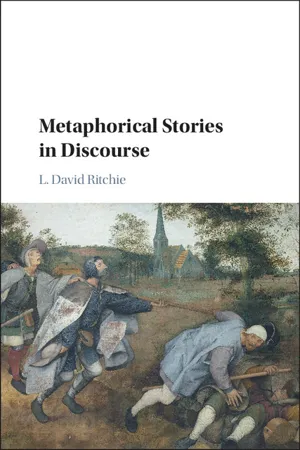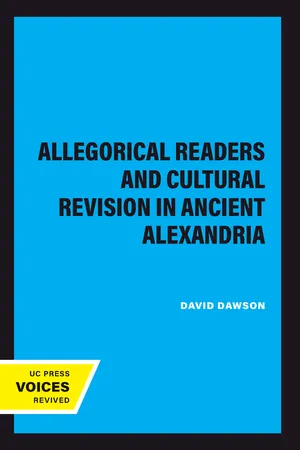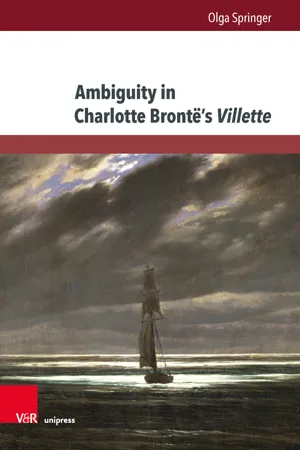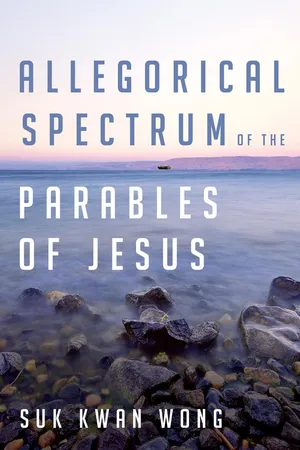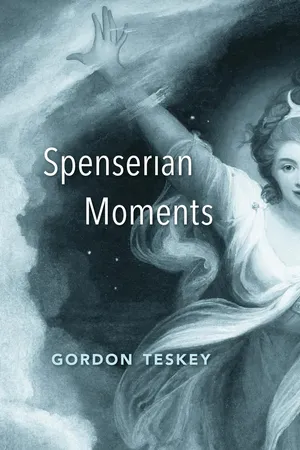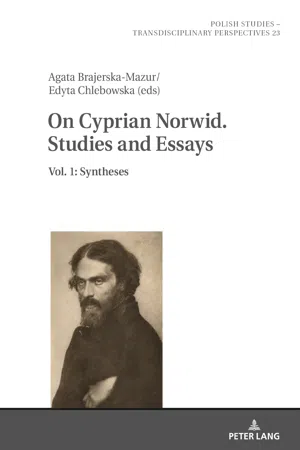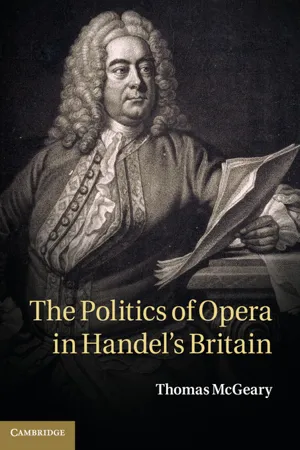Literature
Allegory
An allegory is a literary device in which characters, events, and settings symbolically represent abstract ideas or moral qualities. Through this symbolic representation, allegories often convey deeper meanings and moral lessons. They are commonly used to explore complex themes and provide social or political commentary in literature.
Written by Perlego with AI-assistance
11 Key excerpts on "Allegory"
- eBook - PDF
- L. David Ritchie(Author)
- 2017(Publication Date)
- Cambridge University Press(Publisher)
Crisp (2008) defines Allegory as an extended or “super-extended” metaphor, a fiction that is subject to a continu- ous and consistent metaphorical interpretation (Crisp, 2001), any metaphorical passage in which overt reference to the “target” (topic) domain is omitted (Crisp, 2005b). Gibbs (2011, p. 121) gives an equally broad definition of Allegory as “a cognitive action in which people apply a metaphoric mode of understanding to situations and discourse that typically does not contain metaphorical language per se.” Gibbs (2011) implicitly anchors the concept to storytelling: “Allegory involves an extended metaphor in which the entire narrative introduces and elaborates upon a metaphoric source domain . . . to evoke larger life themes.” In this chapter, I will briefly review several examples of literature that are clearly allegorical, along with some of the recent discussion of Allegory 79 by metaphor theorists and researchers. The aim is not to provide a compre- hensive discussion of Allegory – that would require a very large book in itself (Whitman, 2003). The aim of this chapter is twofold. First, because Allegory is a familiar form of metaphorical story, it is useful to begin with an examination of a few texts that are often cited as examples of Allegory. Second, based on a discussion of literary allegories, this chapter will distin- guish Allegory as a literary form from other kinds of metaphorical story as a basis for discussing the allegorical elements that may be found in other forms of metaphorical story. Allegory in Antiquity By the sixth and fifth century BCE, Greek philosophers were attempting to come to terms with stories about the all too human behavior of the Gods, as portrayed by Homer, Hesiod, and others, while honoring the genius of these early authors. - David Dawson(Author)
- 2023(Publication Date)
- University of California Press(Publisher)
The remainder of this introduction will be devoted to a more detailed description of the specific conception of Allegory that informs this study. I begin by comparing and contrasting my notion of Allegory with the related conceptions of metaphor, personification, and etymology. I then discuss Allegory's possible roles in cultural accommodation and criticism. I go on to situate my approach to Allegory with respect to ongoing debates about Allegory's apologetic function and its relation to "symbol" and "typology." The introduction concludes with a brief overview of the orga- nization and development of the specific claims that will occupy the following chapters. I My understanding of the basic literary character of ancient Allegory is similar to classical rhetorical definitions of the procedure, which are based on the etymology of the Greek term itself. Derived from alios ("other") and agoreuein ("to speak in the agora," i.e., "publicly"), allégoria means most simply "to say something other than what one seems to say." 9 Two special features of my use of the term "Allegory" need emphasis. First, although the focus of this study is on allegorical reading or interpretation, "Allegory" will be used as a generic term to refer to both allegorical in- terpretations and allegorical compositions. Second, interpretations and compositions designated as "allegorical" must have a narrative dimen- 4 ALLEGORICAL READERS AND CULTURAL REVISION sion. By "narrative," I mean nothing more complicated than a story that has a beginning, middle, and end, and depicts the interaction of charac- ters and events over time. 10 For the purposes of this book, then, Allegory always tries to tell a story: either the "other meanings" that Allegory offers or the "literal meanings" that it plays off against must assume a narrative form; where there is no narrative at either "level"-of meaning, some form of nonliteral or figurative reading may be present, but not Allegory.- eBook - PDF
- Olga Springer(Author)
- 2020(Publication Date)
- V&R Unipress(Publisher)
All symbolism, however, is in a sense non-deictic and consciously gives up the element of reference; it only uses reference to point beyond the merely referential world, namely, to the inwardness of experience” (Hagen- büchle 221). Between Revelation and Concealment 195 © 2020, Vandenhoeck & Ruprecht GmbH & Co. KG, Göttingen ISBN Print: 9783847111191 – ISBN E-Book: 9783847011194 The term Allegory itself is moreover ambiguous because it denotes both a stylistic device, i. e. the representation of one meaning through another, and a mode of interpretation, a specific way of reading a text. 347 All figurative language is potentially ambiguous 348 because it consists of different levels of meaning: the literal and the figurative. Therefore, through Allegory, certain things that cannot be said for various reasons may be expressed nevertheless. This makes the device a fitting mode of portraying the elusiveness of Lucy’s inner life, not directly, but “covered with a cloud” (16.175). Allegory moreover lends itself to solving the artistic difficulty of how to portray the invisible side of reality, of finding an authentic representation of feelings and thoughts. It is relevant for the rela- tionship between Allegory and ambiguity that Allegory is seen as a linguistic expression opposed to clarity. 349 While raising this point, Whitman concedes: If Allegory intriguingly suggests its own promise, it also revealingly displays its own problems. The basis for the technique is obliquity – the separation between what a text says, the ‘fiction,’ and what it means, the ‘truth.’ This very obliquity, however, relies upon an assumed correspondence between the fiction and the truth. The apparent 347 Haworth observes about Prudentius’ Psychomachia: “Prudentian criticism has come to distinguish two kinds of Allegory in the poem. The first is usually termed ‘scriptural Allegory,’ […]. - Mads Rosendahl Thomsen, Lasse Horne Kjældgaard, Lis Møller, Lilian Munk Rösing, Peter Simonsen, Dan Ringgaard, Mads Rosendahl Thomsen, Lasse Horne Kjældgaard, Lis Møller, Lilian Munk Rösing, Peter Simonsen, Dan Ringgaard(Authors)
- 2017(Publication Date)
- Bloomsbury Academic(Publisher)
Our mothers’ wombs the tiring-houses be, Where we are dressed for this short comedy. Heaven the judicious sharp spectator is, That sits and marks still who doth act amiss. Our graves that hide us from the searching sun Are like drawn curtains when the play is done. Thus march we, playing, to our latest rest, Only we die in earnest, that’s no jest. Allegory, like its sister personification , is always asking for re-translation: take, for instance, the allegorical personification of Justice—a lady (because of Latin justitia ), blindfolded (because she is said to pass judgment irrespective of who stands before her), with a sword in her hand (because she also executes the verdict). It is as if Literature: An Introduction to Theory and Analysis 124 the semiotic power of metaphor were tamed in Allegory by the sheer number of correspondences—it is tied down, like Gulliver in Lilliput. It must mean one thing. Or two in one . But it doesn’t really provoke a lot of creative guessing or presuppose an unfettered imagination. That is different with symbol . There are many different definitions of “symbol” (some of them conflicting), but I have always preferred Goethe’s, who said that if you try to illustrate the general with the particular, then you are working allegorically, but if you give the reader something concrete and particular that only implies the general, then you work symbolically (cf. Goethe 1982, 471). The two processes mirror each other (in each case, you are given something concrete or particular and expected to see something behind it), but with a fundamental difference: Allegory is just an illustration of a known , whereas a symbol is an invitation to explore the unknown possible meaning(s) implied.- eBook - ePub
- Wong(Author)
- 2017(Publication Date)
- Wipf and Stock(Publisher)
82 Thus, Bullinger’s definition of Allegory is too narrow for use.Lewis considers Allegory as “the very nature of thought and language to represent what is immaterial in picturable terms.”83 Using the visible material to make Allegory, it “talk[s] of that which is confessedly less real” whether it is a thought or feeling.84 Bloom suggests that the idea of Allegory “must be a subtle, intangible union of both structure and meaning” so that the “explicit statement” and “implicit meaning” are well connected.85 In other words, the connection between the statement and its meaning in Allegory is undetectable. Thus, the whole concept of Allegory is basically an implicit relationship between something unexplained and something visible.Models of AllegoryRhetorical studies on Allegory later focus on arranging literature on a spectrum of allegories. Some of the advocates are Frye, Graham Hough, and E. J. Tinsley. Frye arranges allegories in literature on a sliding scale.86 One end of the scale is naive Allegory, which is “the most explicitly allegorical” literature such as discursive writing and teaching points.87 At the other end of the scale, literature becomes “anti-explicit and anti-allegorical” with “increasingly ironic and paradoxical.”88 The midpoint of the scale is literature with Allegory that has implicit relationship between image and idea.89 Continuous Allegory, free-style Allegory, and Allegory with poetic structure carrying doctrinal interest lie between naive Allegory and the midpoint.90 - eBook - ePub
The Good News of the Return of the King
The Gospel in Middle-earth
- Michael T. Jahosky(Author)
- 2020(Publication Date)
- Wipf and Stock(Publisher)
It is only by focusing on the story that we can eventually discern what the author may be trying to communicate. Finally, we must exercise caution about coming to certain conclusions, as Dickerson pointed out above. Thankfully, we are very lucky to have enough comments from Tolkien about the meaning of his mythology that our interpretive task is not overly difficult. Ultimately, Snodgrass argues—as we are in this book—that it is impossible to separate parables and allegories into two distinct literary forms, for according to him, though “the claim is made that Allegory says something other than what it means by placing pictures in front of reality. . . parable does the same thing. Both are framed on the reality they seek to portray.” 187 It seems wise to follow Tolkien’s lead in settling on a classification of allegories, though even if we assumed Murray’s genus of parables instead, the result would practically be the same. For example, according to Murray, “Allegory is woven into the fabric of the parable, but with a delicacy which does not spoil the joy of working it out for oneself.” 188 What does Murray mean here? First, totally removing allegorical elements from a work is quite nearly impossible, though Murray says clearly here that Allegory can be woven delicately into a narrative. Second, Murray is saying that the allegorical elements are hidden so well within Tolkien’s narrative that one can hardly detect its presence. What exactly does that mean? According to Kreglinger, “Allegory avoids confusion and opposition,” and the allegorical elements of a story are “clear, direct, and without tension.” 189 By contrast, metaphor “works on the basis of an unconventional usage of words” and is “opaque and complex.” 190 It is important to maintain the distinction between Allegory as a genre and a mode. As a genre, Allegory is consciously planned by the author who is so eager to make their points that the story has no real heart - eBook - PDF
The Bible in Human Society
Essays in Honour of John Rogerson
- Mark Daniel Carroll R., David J. A. Clines, Philip R. Davies(Authors)
- 1995(Publication Date)
- Sheffield Academic Press(Publisher)
One feature of the attack on New Criticism was the recovery of Allegory as an 'extrinsic' strategy of reading. See further, P. de Man, Allegories of Reading (New Haven: Yale University Press, 1979); S.J. Greenblatt (ed.), Allegory and Representation (Baltimore: Johns Hopkins University Press, 1981). 3. Young, 'Allegory', p. 110; idem, The Art of Performance (London: Darton, Longman & Todd, 1990), p. 136. 68 The Bible in Human Society of allegories. The term 'Allegory' will be used as an umbrella category to cover the variety of interpretative practices that construe texts in some way other than their surface sense. My purpose is to examine the ethical implications of 'reading one thing in terms of another'. 4 We will begin by looking at a defence of Allegory that is based on a principle of respect for authors. The question which then arises is whether there are any conditions under which an interpreter might be justified in using Allegory against an author's motive or intention. I will argue that certain kinds of political Allegory fall into this category. Thirdly, we will examine the implications of postmodern defences of Christological Allegory, raising the question, in particular, whether such neo-conservatism has an adequate ethic. Finally, the theoretical issues will be discussed in relation to an exegetical case study—the development of the Melchizedek tradition. Allegory and Respect for Authors The literary critic E.D. Hirsch has consistently advocated that authorial intention should be a regulative ideal for interpretation. This thesis has always been connected with notions of determinate meaning, but Hirsch has been careful to note that such determinacy is not a 'given' of the text; it is at least in part the product of an ethical choice. Thus, Hirsch argues that 'The choice of an interpretive norm is not required by the nature of the text, but, being a choice, belongs to the domain of ethics rather than the domain of ontology'. - eBook - PDF
- Gordon Teskey(Author)
- 2019(Publication Date)
- Belknap Press(Publisher)
It’s the hidden thought that is important, not the consistency of the metaphors used. But consistency is preferred, at least it is by the ancient rhetoricians and by the eighteenth- century literary critics who thought that Allegory is a purely rhetorical term. It is small wonder that they had trouble approving of Spenser. From the earliest uses of the term, Allegory is associated with mystery, with veiled, cryptic tales. Indeed, even for the rhetoricians, a fable is de-fined, as Aelius Theon famously expressed it, as “a false discourse imi-tating truth.” The more ridiculous or repellent the tale, the more likely it is to be concealing an allegorical meaning. 15 Quintilian’s inspired definition, “continued metaphor,” removes alle-gory from its direct association with mysterious tales and inscribes it more deeply in the context of rhetorical tropes. Although it was invented before the rise of complex allegorical works in the Middle Ages, it says something important about Allegory as a literary genre, even if it does not define it. In antiquity, allegoria, which was closely related to ainos, “hint, riddle,” and ainigma, often referred to brief comparisons or fables meant to persuade, such as the famous one of Menenius Agrippa in Livy, repro-duced by Shakespeare in Coriolanus, when Menenius compares the organs of the body to different classes in the state, the stomach being the nobles. In John Milton, writing against the bishops, the roll played by the stomach in Menenius’s brief Allegory is played instead by “a huge and monstrous Wen.” 16 A biblical example of such an ainos or hinting discourse, as men-tioned, is Jotham’s parable of the trees. Such tales may be found at all times in all cultures, oral and written; and it is surely significant that they all have political force. “Continued metaphor” thus implies a series of connected metaphors carefully aligned or one metaphor carried on at length. - eBook - PDF
Allegoresis
Reading Canonical Literature East and West
- Longxi Zhang(Author)
- 2018(Publication Date)
- Cornell University Press(Publisher)
The first one is from Horace’s ode that “represents the state under the semblance of a ship, the civil wars as tempests, and peace and good-will as the haven”; it is again firmly grounded in the real world of Roman history. 105 The other type of Allegory, in which what is meant is “absolutely opposed to the meaning of the words,” has nothing to do with transcen-dental philosophy or theology, either, but it involves, says Quintilian, “an element of irony, or, as our rhetoricians call it, illusio, ” that is, ironic state-ments that “censure with counterfeited praise and praise under a pretence of blame.” 106 In fact, as they are so close to antiphrasis, mockery, and sar-casm, some writers do not consider them species of Allegory but just tropes, “for they argue shrewdly that Allegory involves an element of obscurity, whereas in all these cases our meaning is perfectly obvious.” 107 For Quintilian and the ancient rhetorical tradition he represents, Allegory is clearly not tied to a metaphysical or theological sensus spiritualis. Even in the Christian concept of Allegory, the literal and the allegorical do not necessarily dwell on different semantic levels, either. The medieval fourfold interpretation of the Bible, as Morton Bloomfield observes, does not always move the spiritual meaning away from the literal to a totally dif-ferent level of transcendence or metaphysical presence. The moral or tropological level, for instance, does not refer to another reality revealed by words, but is actually seen in the meaning itself. When Isaac displays the virtue of obedience as he willingly lies on the altar at his father’s command, the tropological meaning is right in the primary level of meaning: obedience to the command of one’s superiors. Furthermore, in personification-Allegory the allegorical meaning (or most of it) is in the literal sense itself. - eBook - PDF
On Cyprian Norwid. Studies and Essays
Vol. 1: Syntheses
- Agata Brajerska-Mazur, Edyta Chlebowska(Authors)
- 2019(Publication Date)
- Peter Lang Group(Publisher)
What is most important here is that those genres were in some way related to Allegory, and some of them – above all the parable – may be simply called allegoric genres. Symbols never occur within such genealogical entanglements; they are much less related to specific genres than allegories, which results from the assumed one-time nature of a symbol (even in those frequent cases when it only appears to be of one-time use). Those genres exhibit features which are charactertistic of Allegory but at the same time do not relate to symbolism. We should name two of those, seem- ingly fundamental, features: fictionalisation (story-telling) and relation to dis- course. Allegory can turn into a story at any moment. Some theoreticians and historians of allegoric speech consider this fictionalisation – not always merely potential – to be one of its essential distinguishing features. This is a very unique fictionalisation characterised by advanced schematisation, which results mainly from the fact that the elements constituting a certain course of events are barely, or not at all, independent. They are first and foremost carriers of cer- tain meanings or they have been directly subordinated to such meanings, as is often the case. Such a phenomenon is called an exemplary storyline. It can 2 See T. Todorov, Théories du symbole, (Paris: Seuil, 1977). 3 I discuss this issue in the paper “Norwida wiersze-przypowieści” (in the collec- tion: Cyprian Norwid. W 150-lecie urodzin, Materiały konferencji naukowej 23–25 września 1971, ed. M. Żmigrodzka. Warszawa: PIW, 1973). In this vol. see: M. Głowiński, “Norwid’s Poem-parables,” pp. 337–374. Michał Głowiński 468 never relate to symbolism, because even if a storyline develops as the result of a symbol (which is typical, e.g., of Leśmian), it has a completely different nature – to some extent, it is similar to a myth. And exemplary storylines of little indepen- dence are what is constantly offered in Norwid’s poetry. - eBook - PDF
- Thomas McGeary(Author)
- 2013(Publication Date)
- Cambridge University Press(Publisher)
110 In almost all cases, the actual allegorical narrative is preceded by a short introduction or framing device that invariably consists of Mr. Bickerstaff or Mr. Spectator relating the events inducing him to fall asleep to dream the vision. In these short narratives, the human actors represent passions, virtues, vices, and various affections of the mind. 111 Quintilian is a classical touchstone for the view that Allegory’s virtue lay in its immediate and vivid conveyance of meaning: “When, however, an Allegory is too obscure, we call it a riddle: such riddles are, in my opinion, to be regarded as blemishes, in view of the fact that lucidity is a virtue.” 112 An Allegory that is obscure violated Hughes’ criteria that it be “clear and intelligible.” “A Moral which is not clear,” he continued, “lies at the Mercy of every fanciful Interpreter.” 113 Dryden prided himself that the Allegory of Albion and Albanius was “so very obvious, that it will no sooner be read than understood.” 114 An opera such as Silla, whose Allegory is so opaque that it is amenable to multiple and contradictory readings, would violate the period’s expectations about Allegory. Named characters in epic or drama, even when figures supposedly drawn from history, were not expected to be accurate representations of the his- torical figure but universal characters or abstractions of virtues, vices, pas- sions, or human faculties. A commentator on Addison’s Cato stated: Dramatic Action ought to be General and Allegoric, not Particular; because Particu- lar Actions can’t have a General Influence … Thus it is with Cato; for it not only shews what Cato did, but what any other Hero with his Manners, and Qualifications, in the same Circumstances, Notions, and Passions, wou’d have done. 115 John Dennis grants that poets need to take names from history “to give the Action an Air of Truth.” But even these named persons “remain at the bot- tom Universal and Allegorical.” 116 For Dennis, Allegory 39
Index pages curate the most relevant extracts from our library of academic textbooks. They’ve been created using an in-house natural language model (NLM), each adding context and meaning to key research topics.
